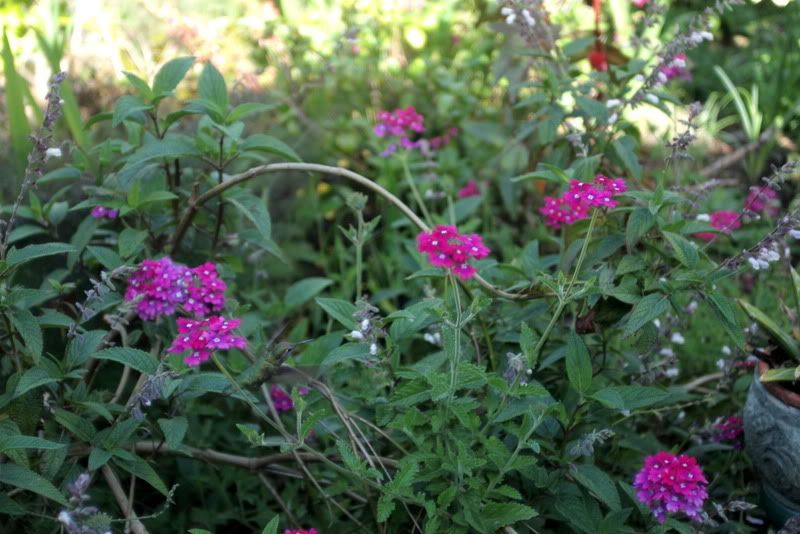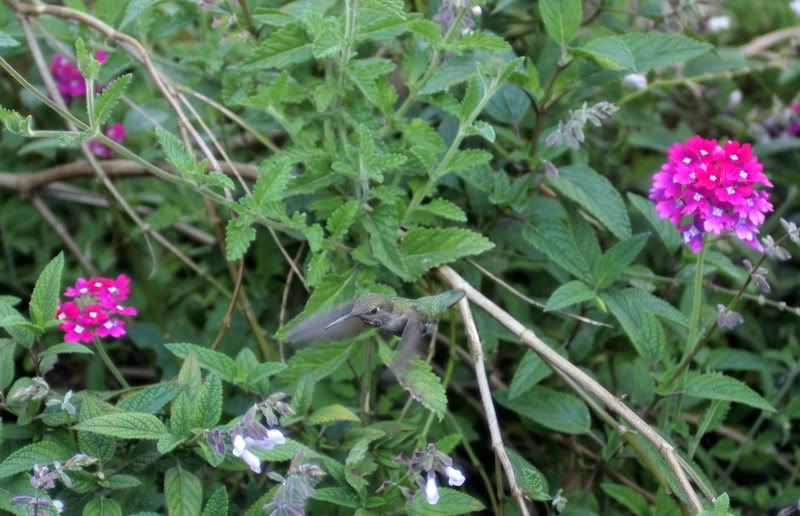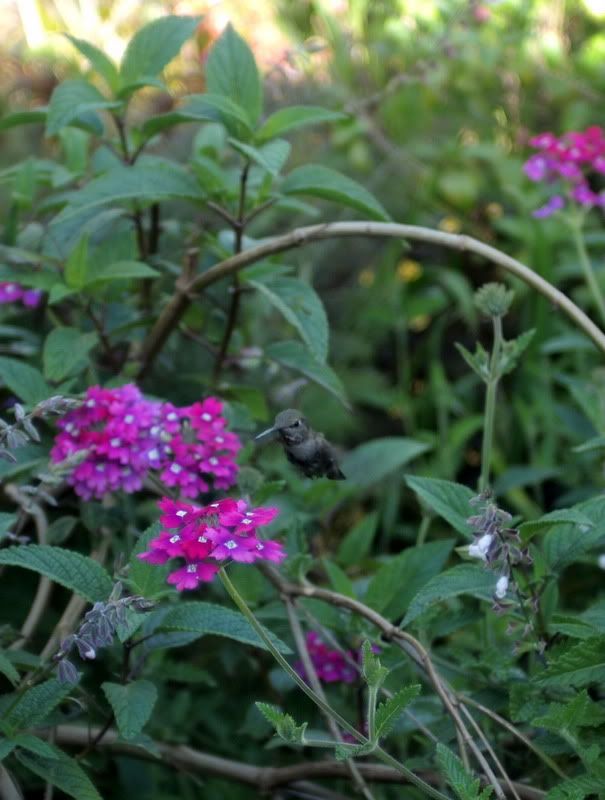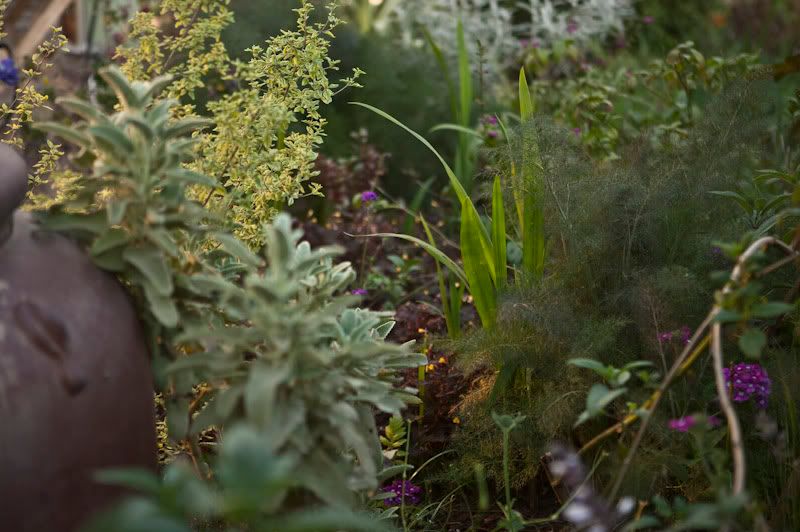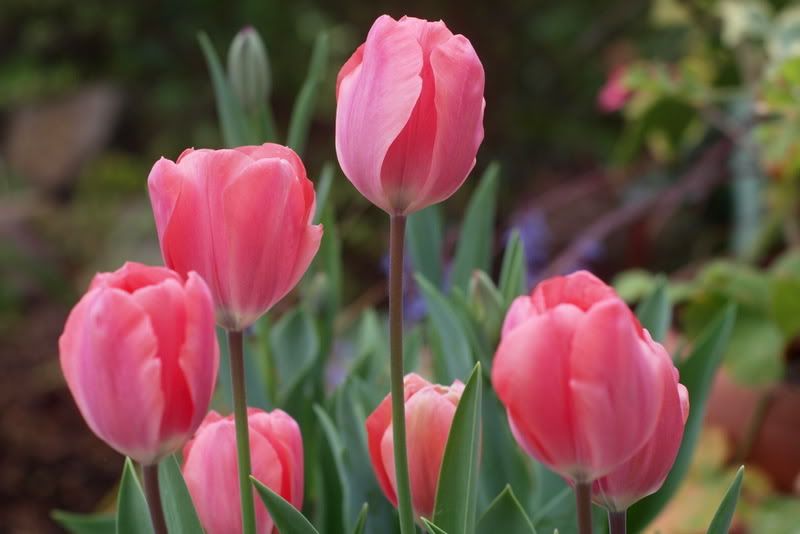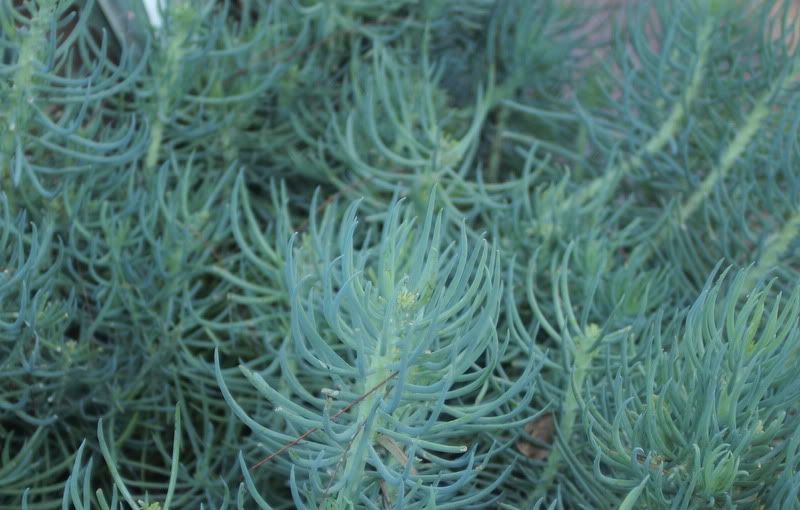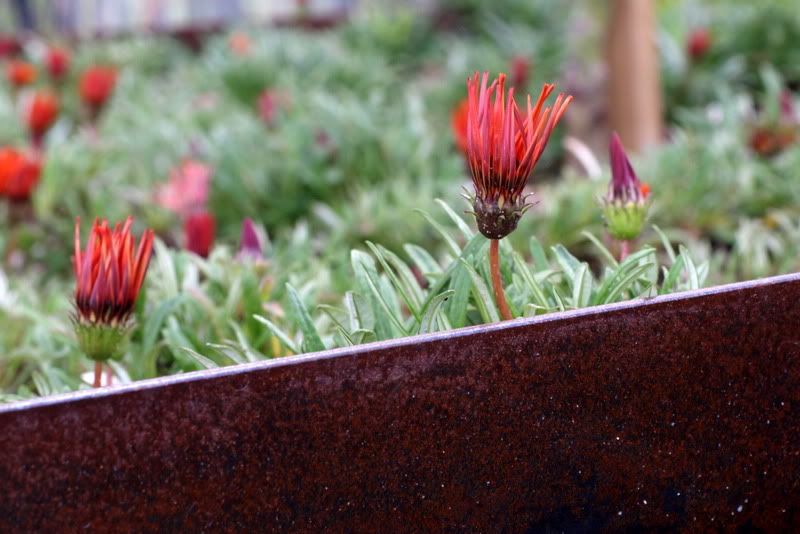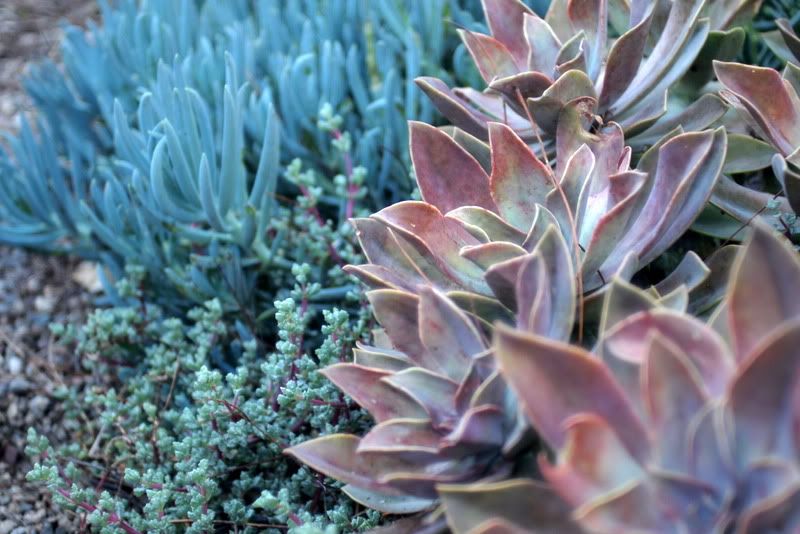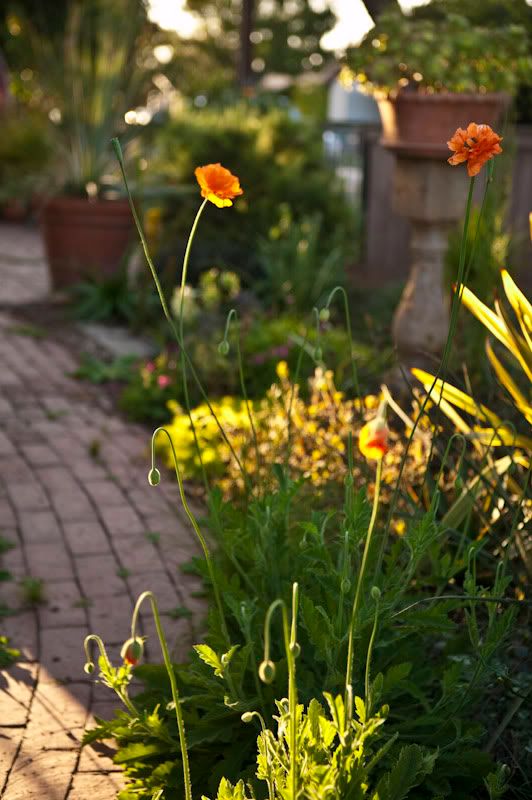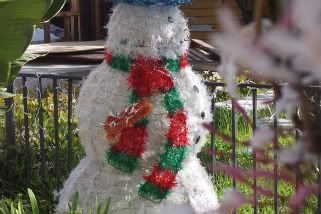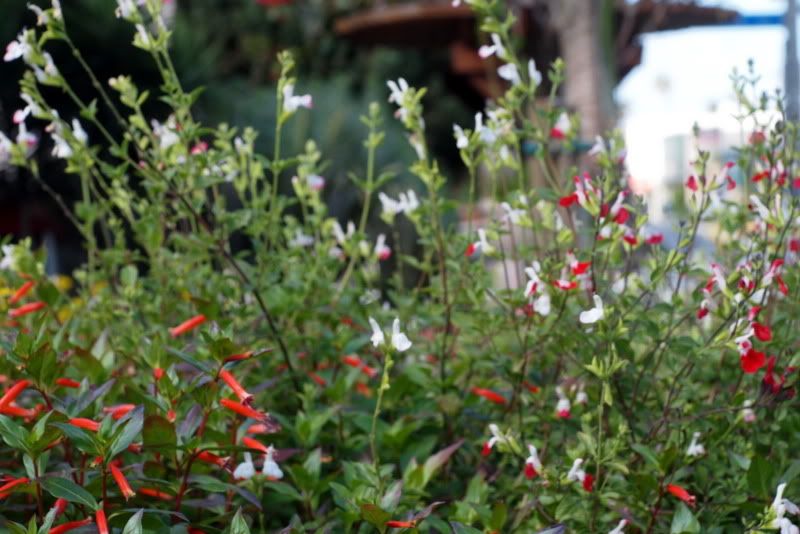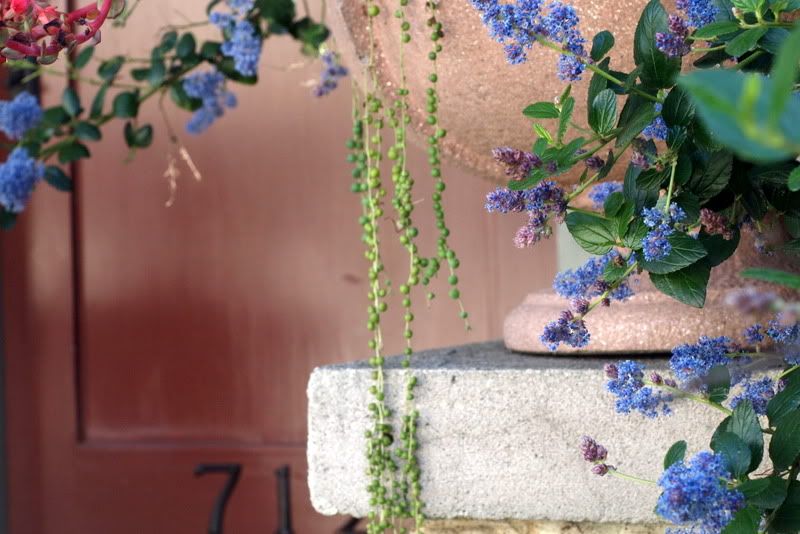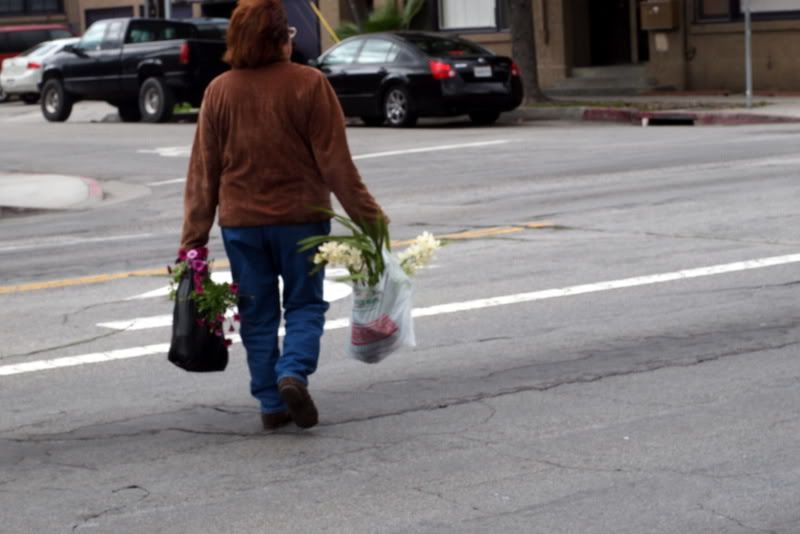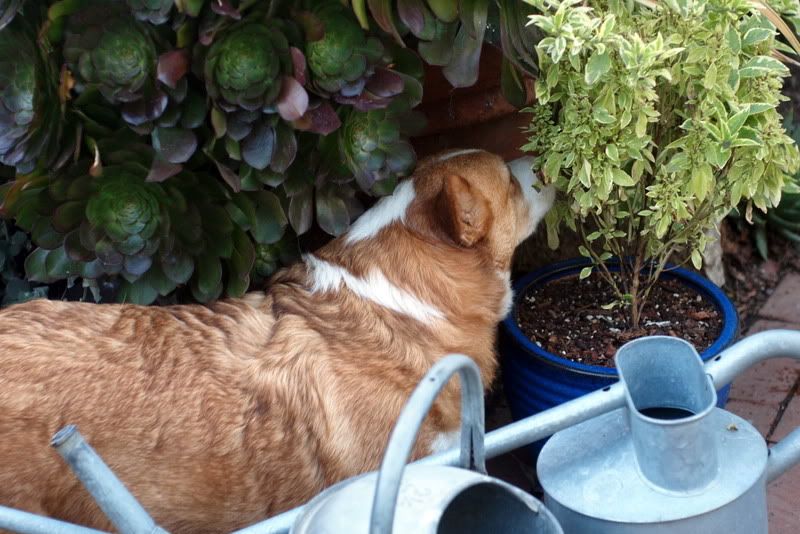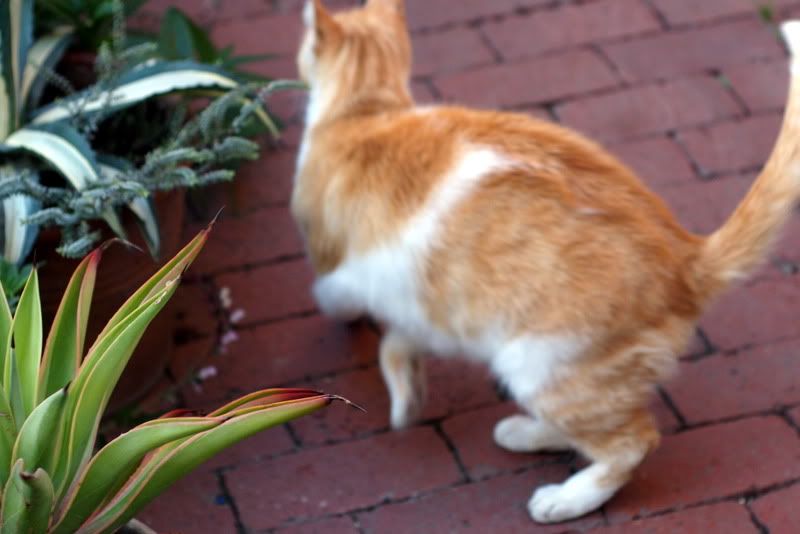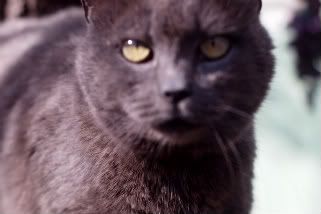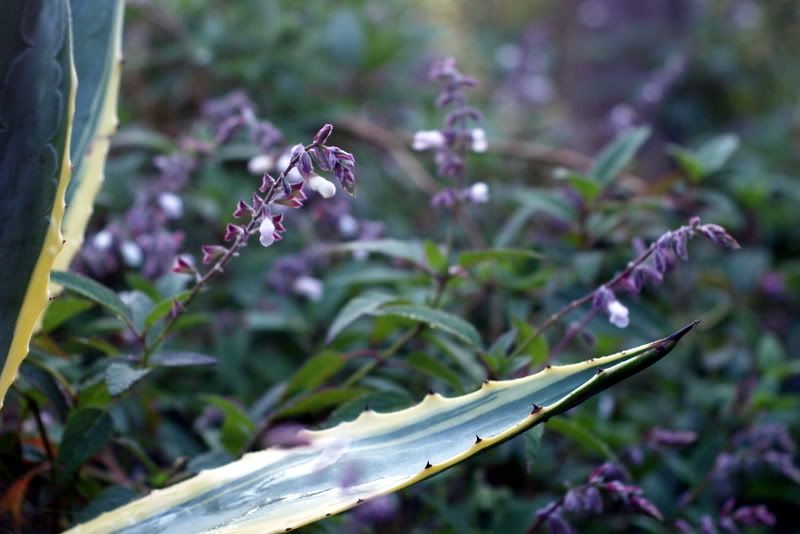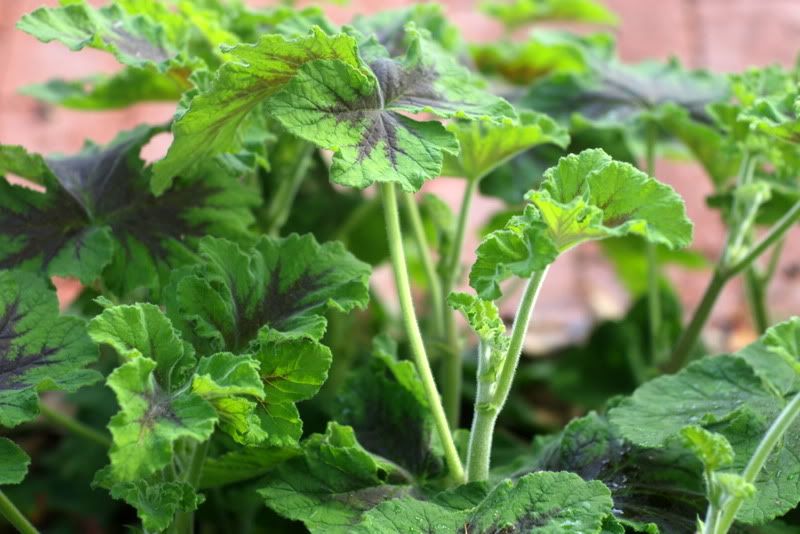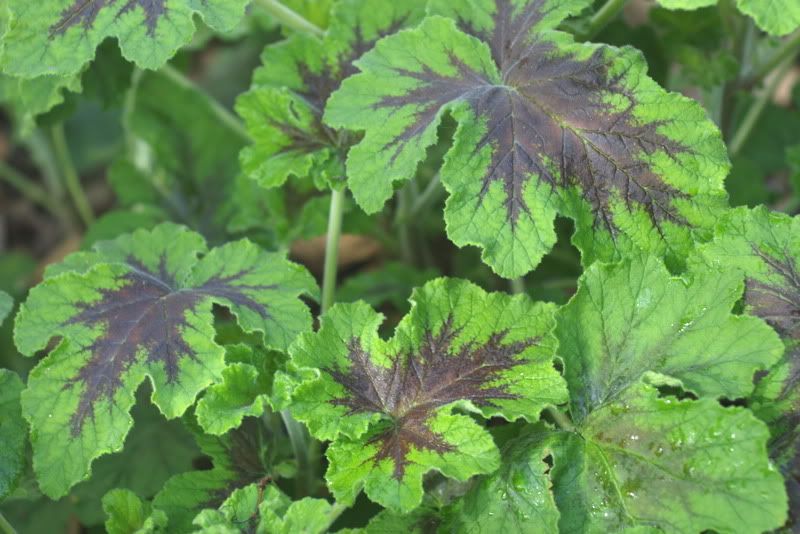With salvias planted just a few feet away from windows and doors, humans and hummers are in constant close proximity here. This is by necessity, the constraints of a small garden, rather than by design. The fact is, hummers and I both happen to be crazy for salvias. It makes for some interesting encounters, spilt cups of coffee, and cats rudely awakened from a dozy afternoon nap. Who wouldn’t be enchanted by these little guys darting in several times a day for a quick nip?
Right now, the salvias and verbenas outside the office are a big draw. When I hear a hummer come skidding in for a landing, I make a grab for the camera but always come up empty. Doesn’t help that they’re green. Today the blur of speed materialized out of pixels into barely recognizable shape. Although my best photographic attempt thus far, this hummer’s name must be Waldo, as in where the heck is Waldo in this photo? Squint and focus on the far left verbena, just to the right.
Friends and family assume that because I garden I am a de facto font of wisdom regarding the natural world. It shames me to admit that I’ve just recently learned that Southern California is one of the few places blessed to have hummingbirds year-round. I’m just as bundled up in my own little world as everyone else, and mostly step outside my kitchen door assuming that the world that greets me also greets everyone else in much the same form, with a few superficial details altered.
Again Waldo, the little Anna hummingbird:
I’ve even become able to recognize certain hummers by the distinct thrum of their wings. One little guy makes a a poker cards-in-bicycle-wheels racket when he wings in. Several years ago, there was a hummer who demanded face time, literally flying in inches from my face and hovering for a few seconds before heading off to the flowers. This became an everyday custom for a whole summer season, but hasn’t been taken up yet by another hummer in subsequent years. I miss the face time and that little guy’s chutzpah. Yesterday a hummer bathed in the jet of water from the hose, which I then took pains to keep a soft spritz, not the “power cone” setting, to keep him from tumbling out of the sky. I still haven’t decided if they are the most sociable bird since the chicken or if it’s just me in my usual state of anthropomorphic overdrive.
See you around, Waldo.

